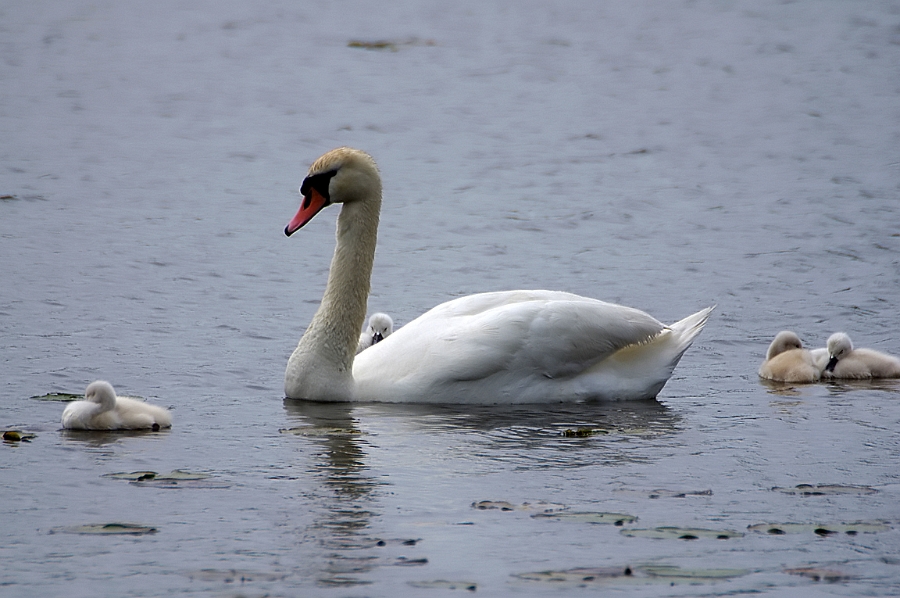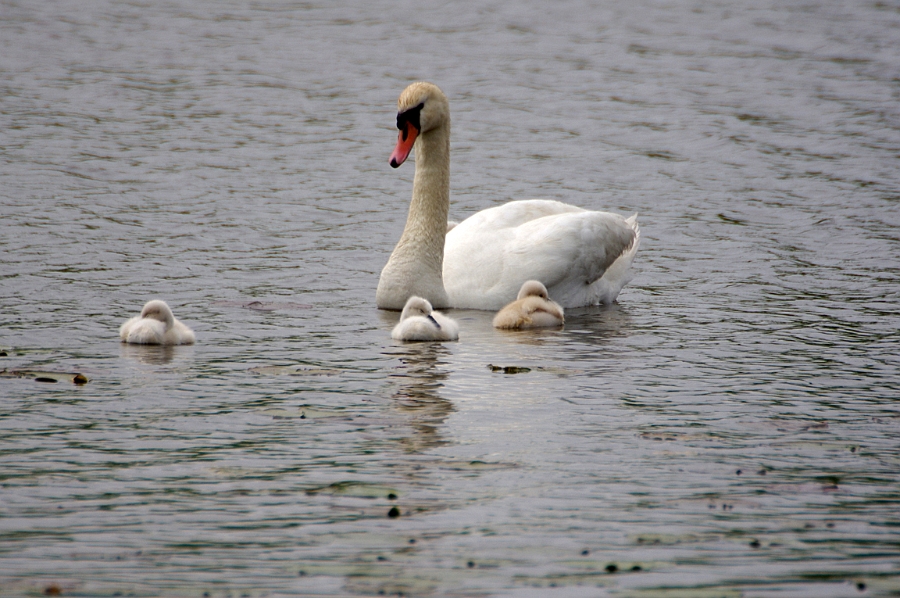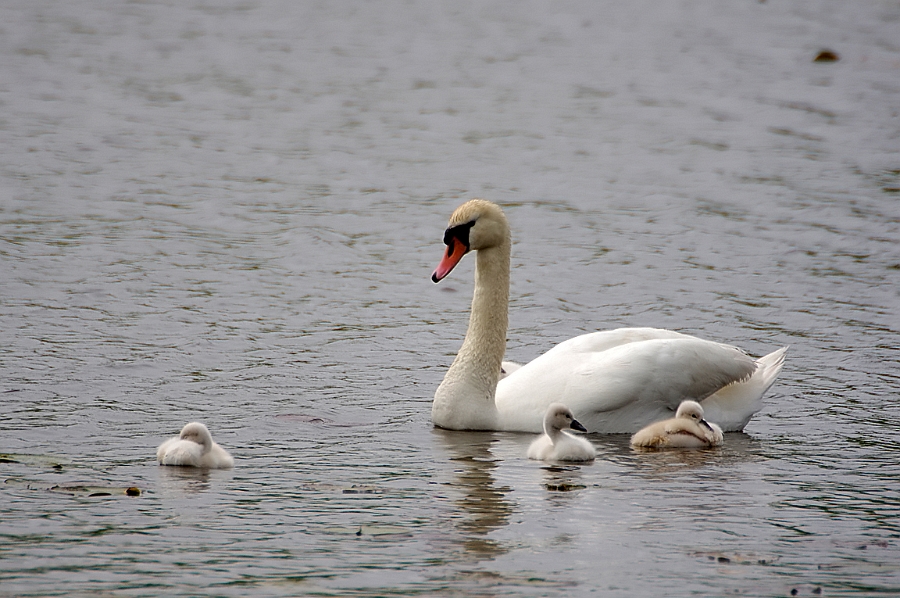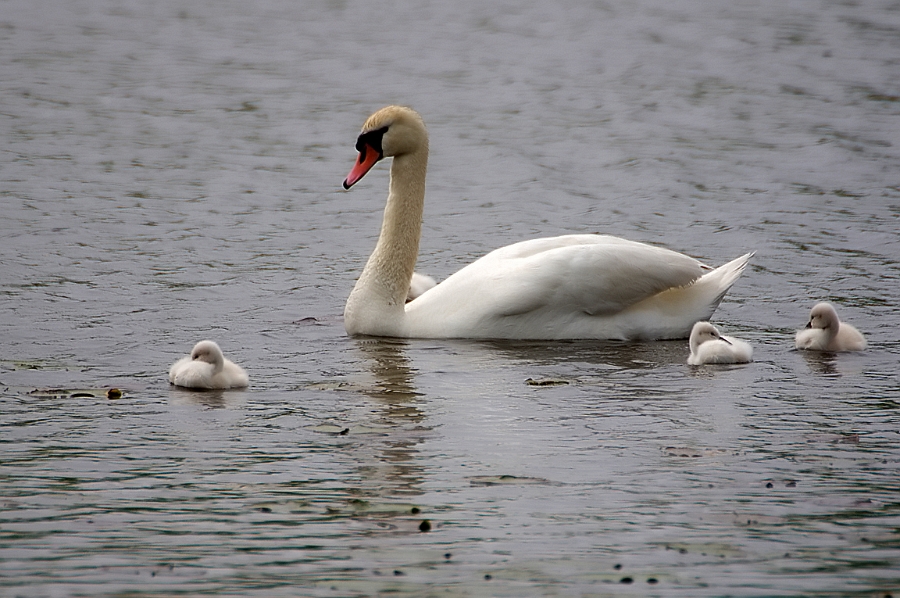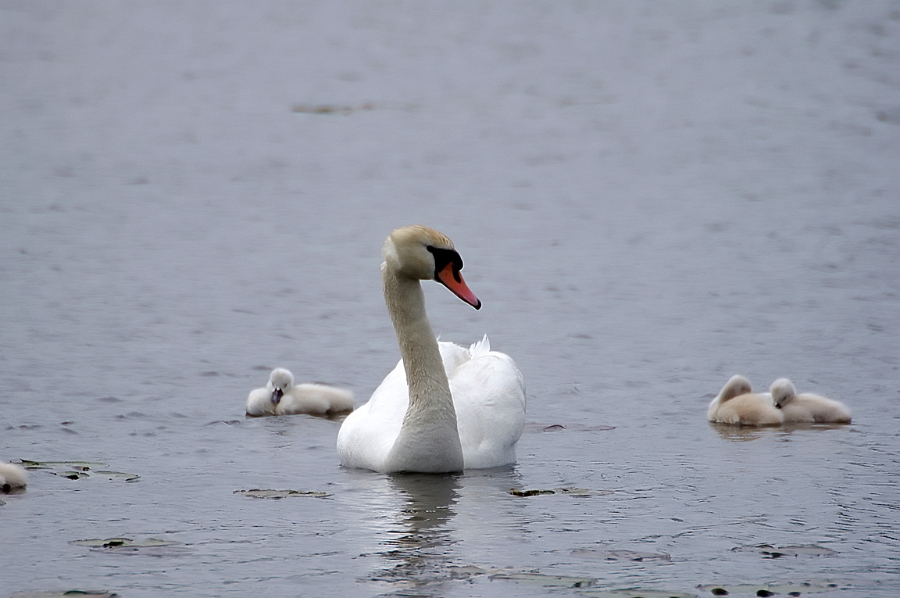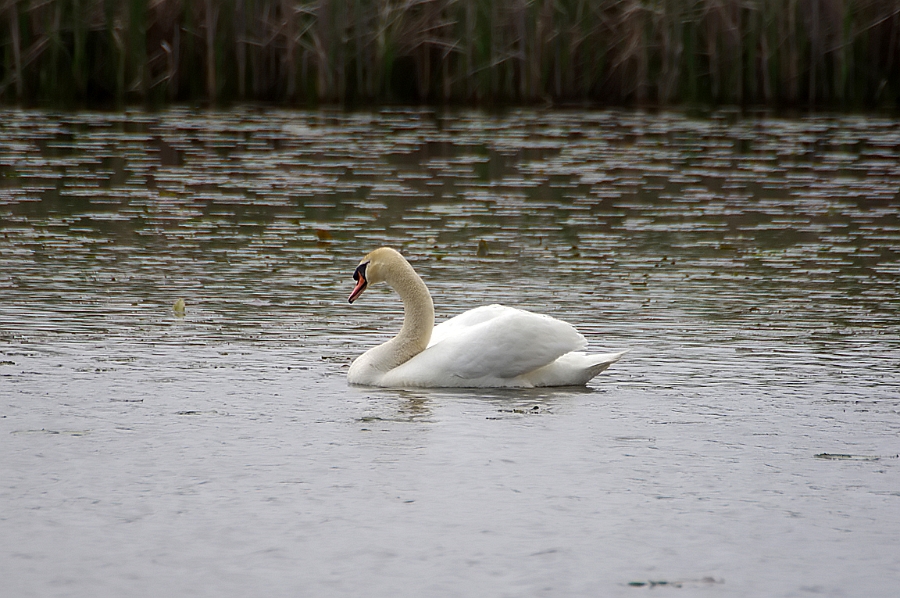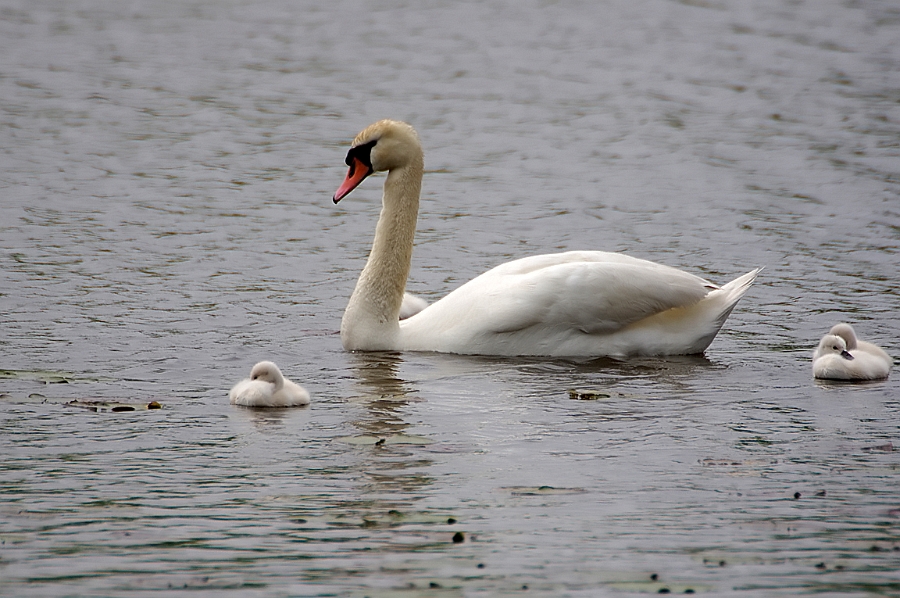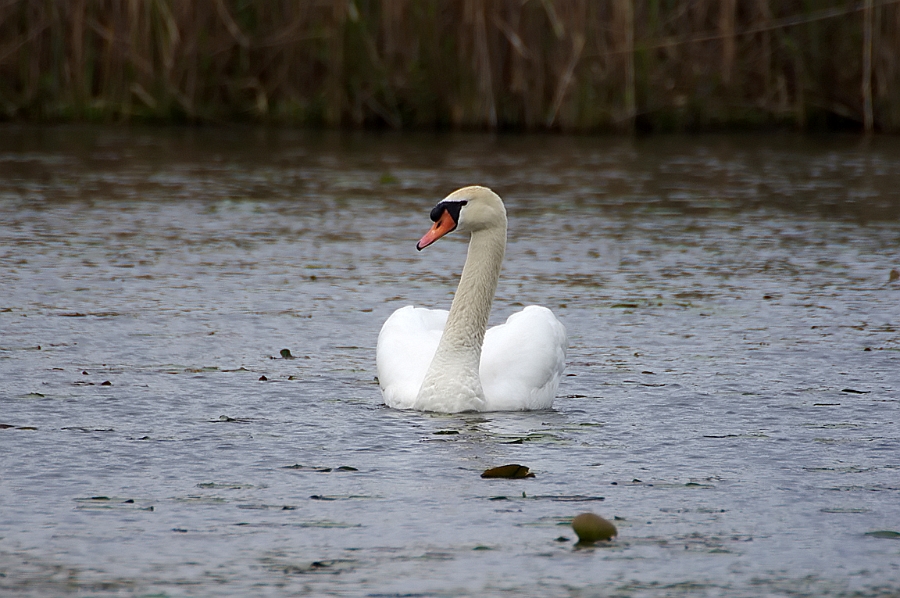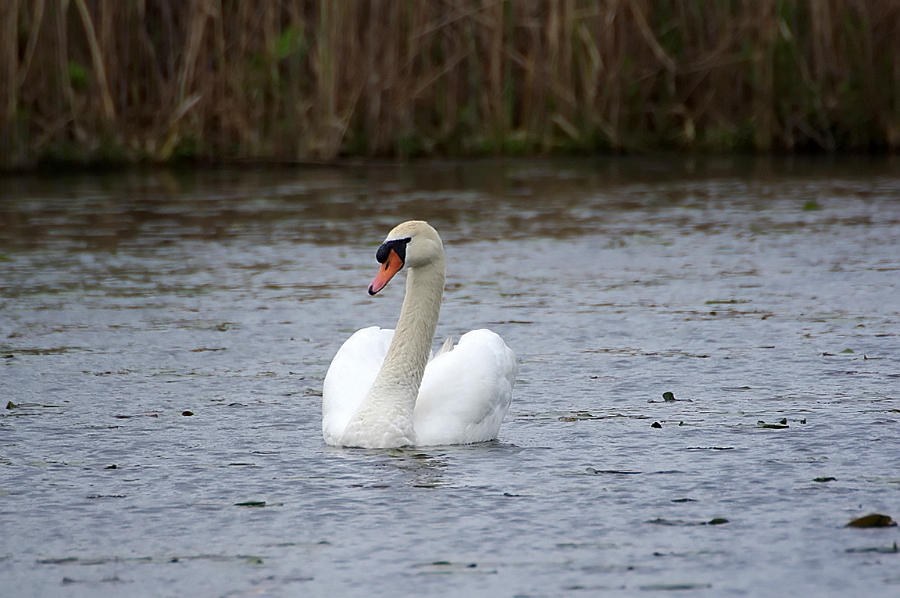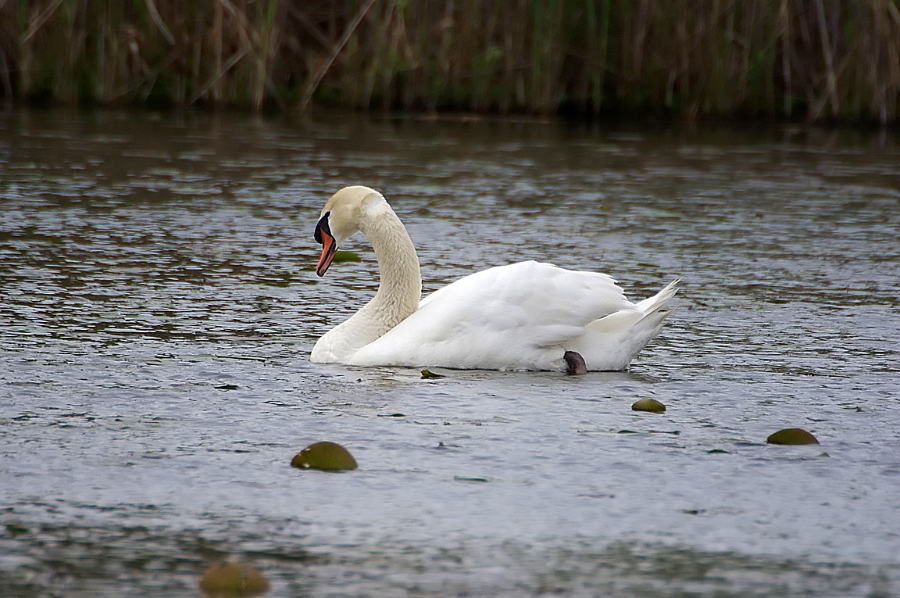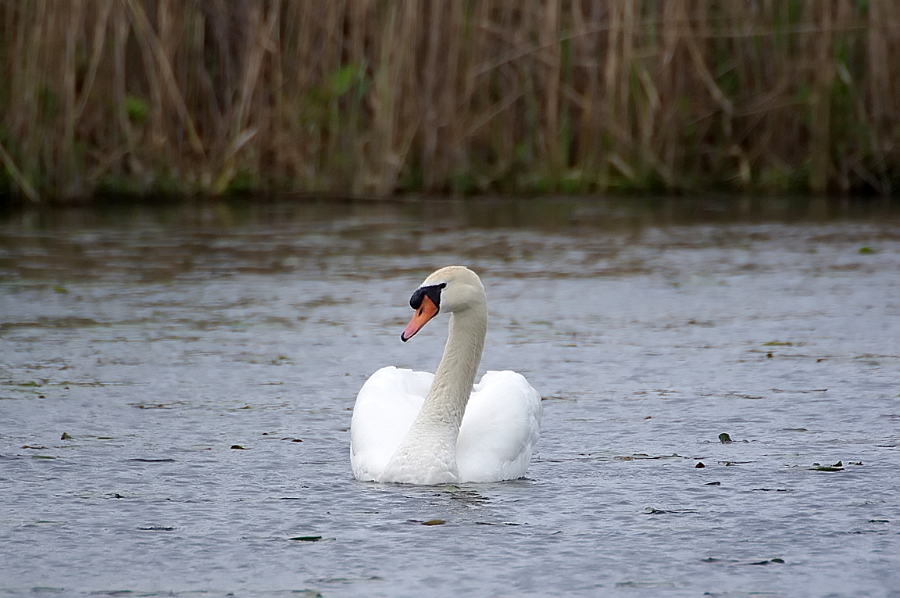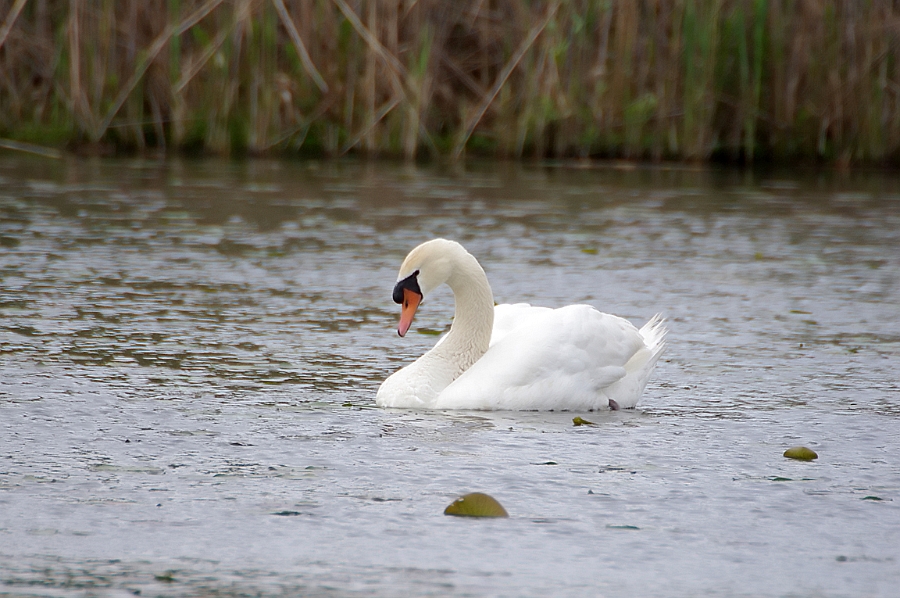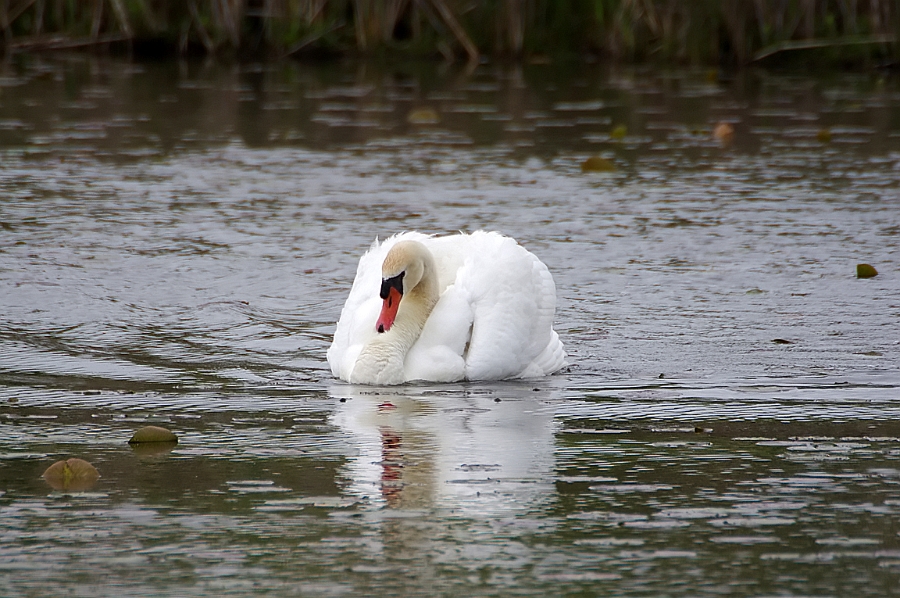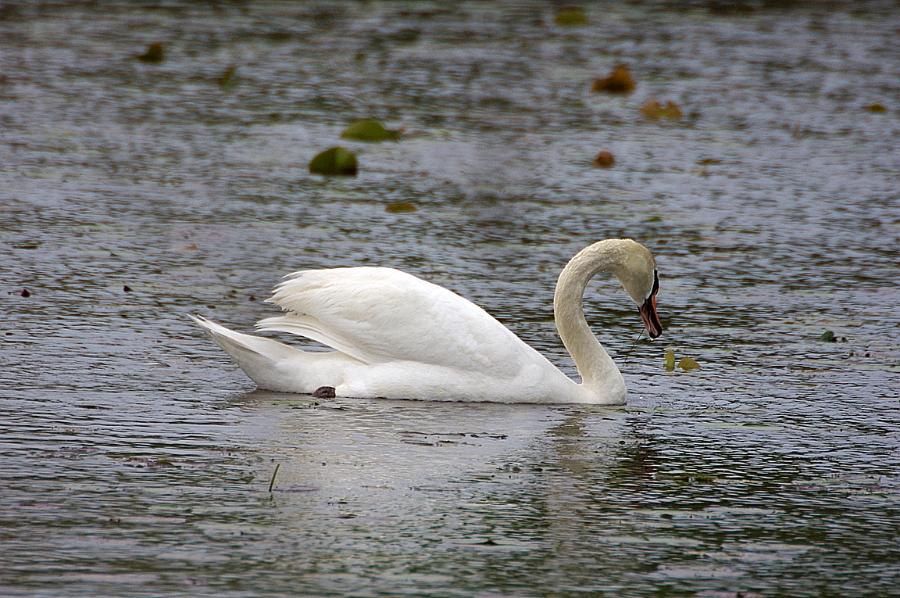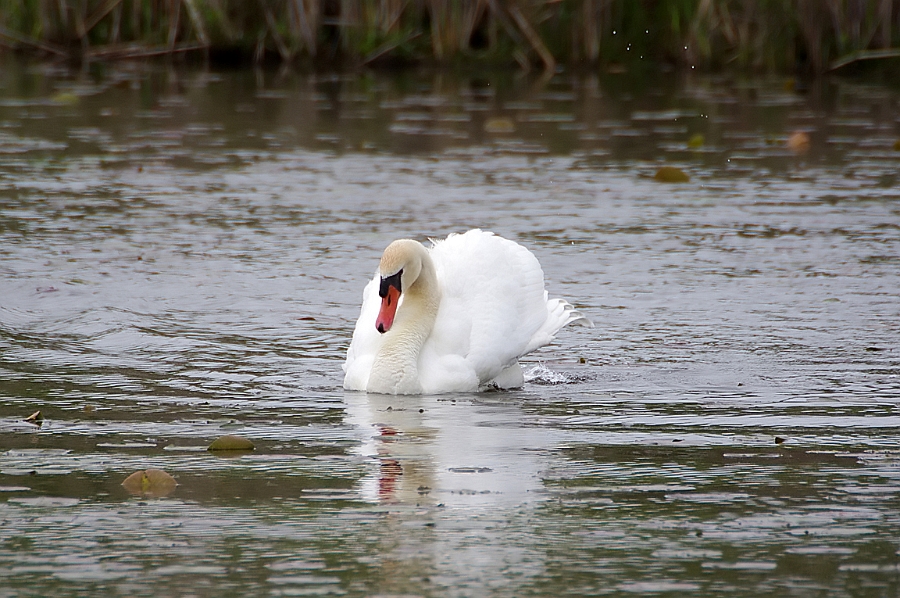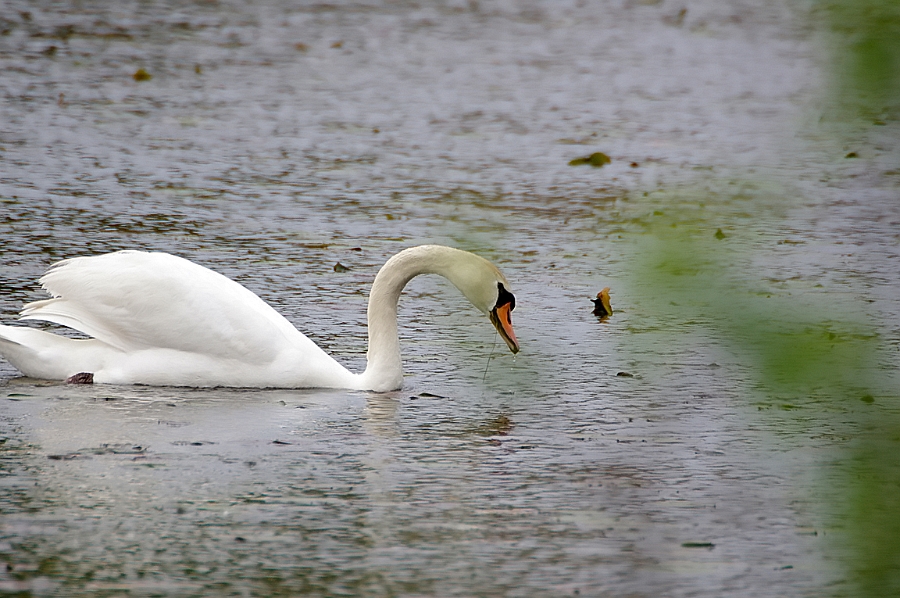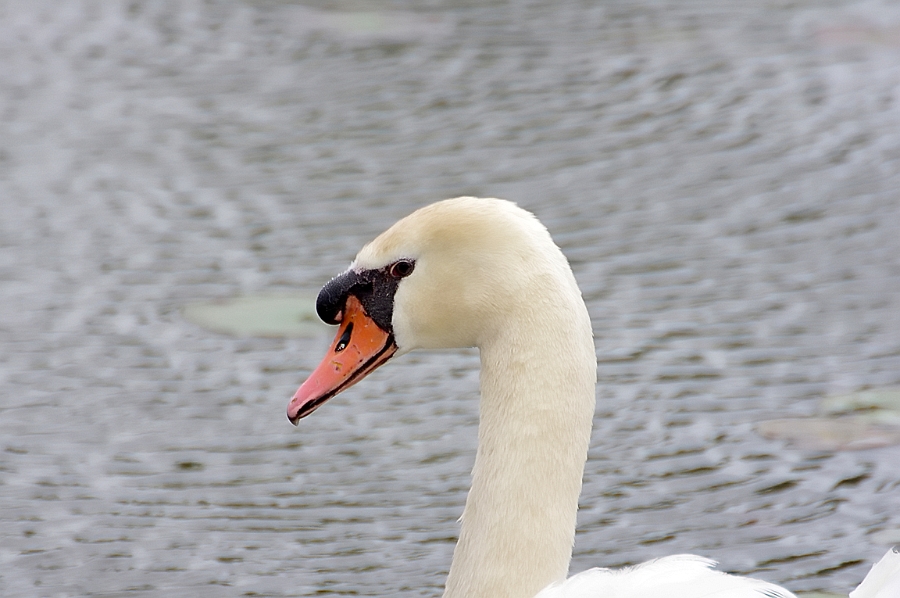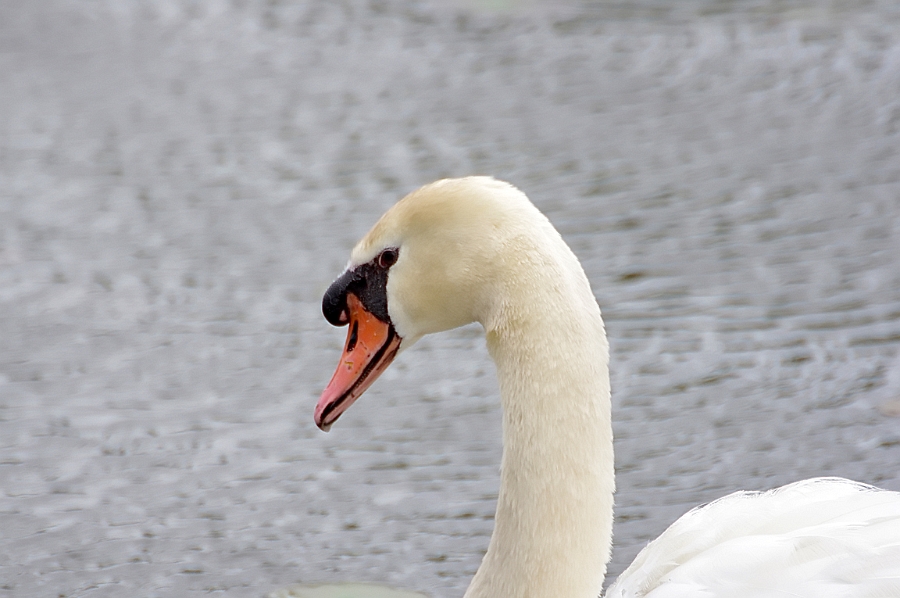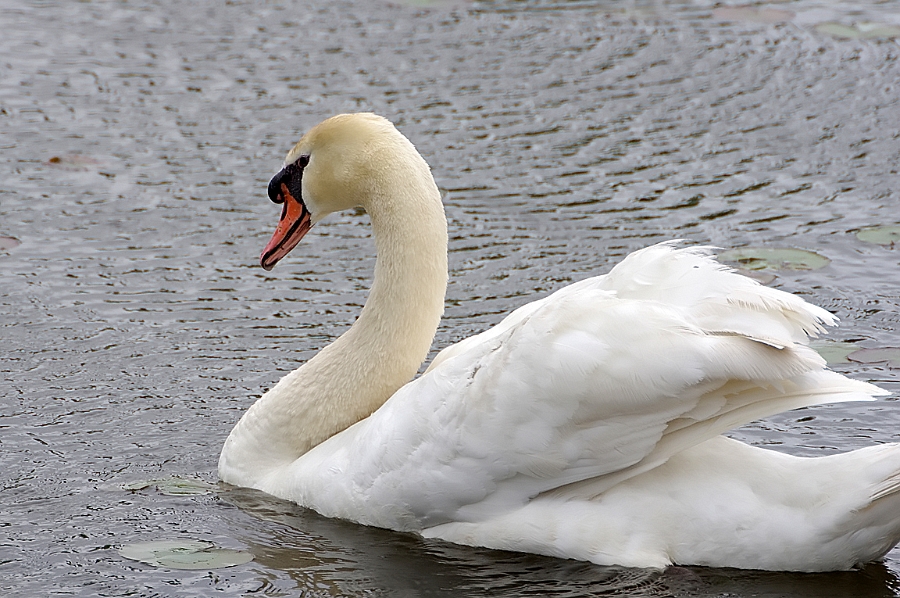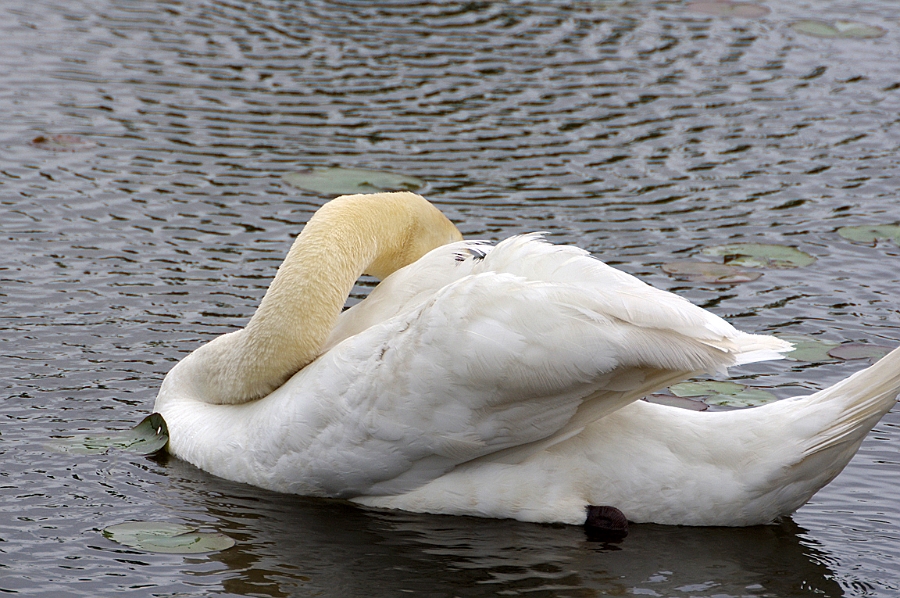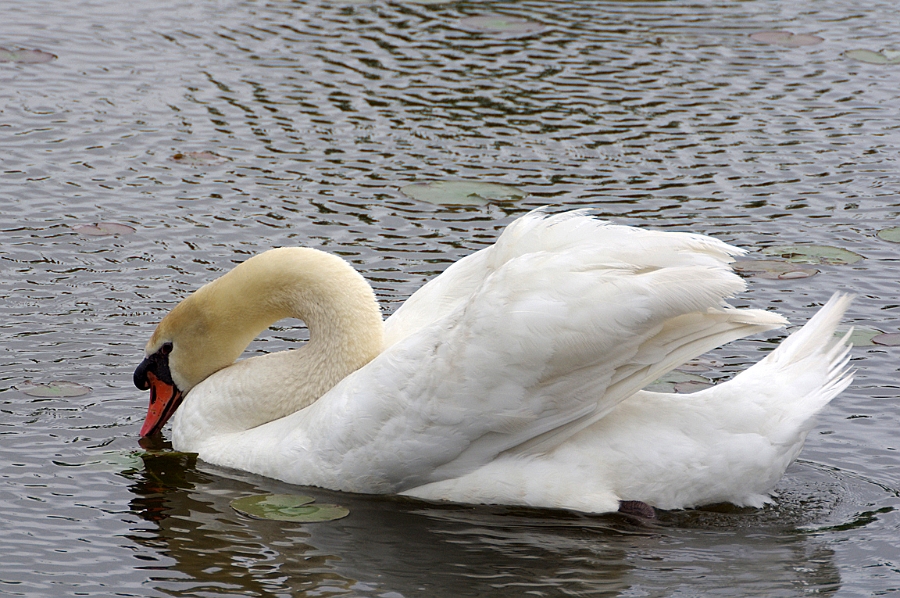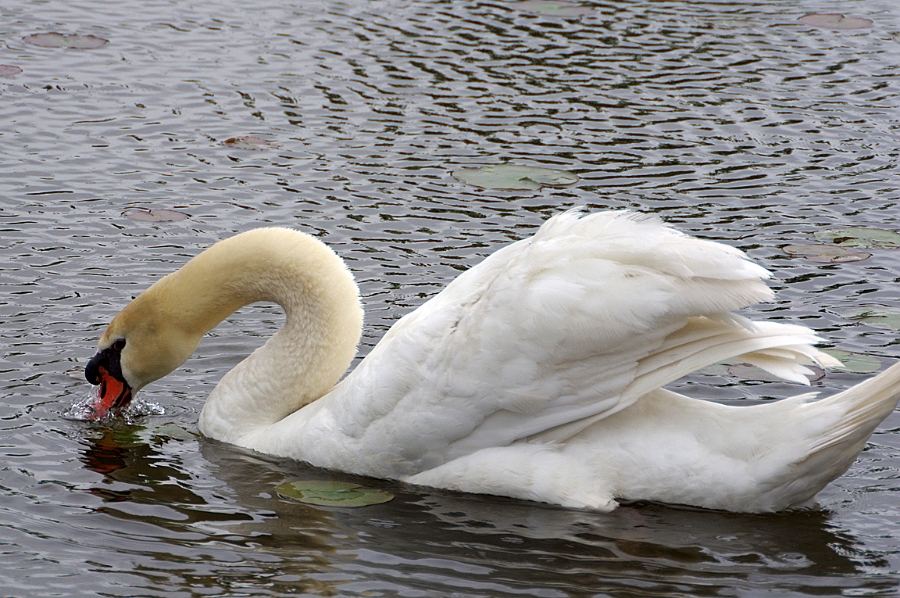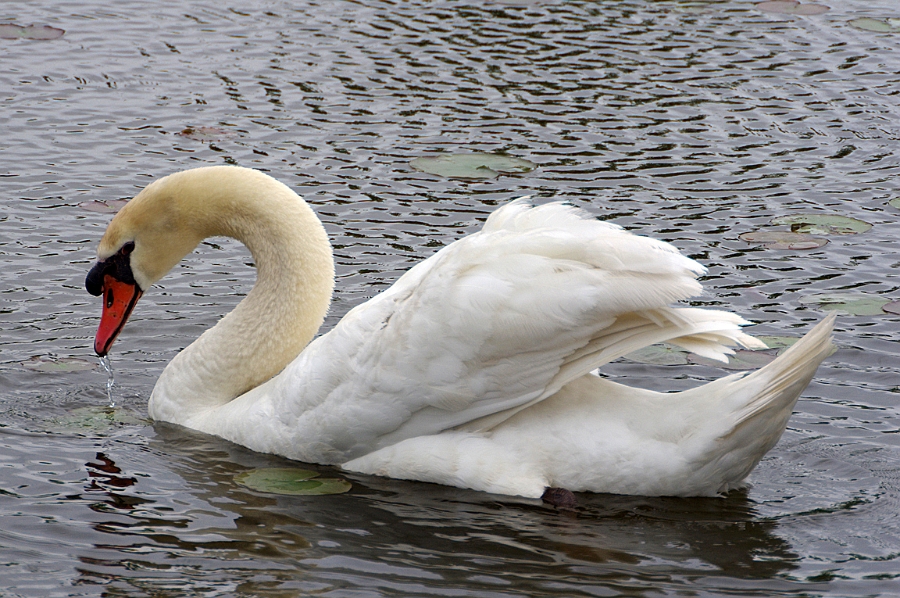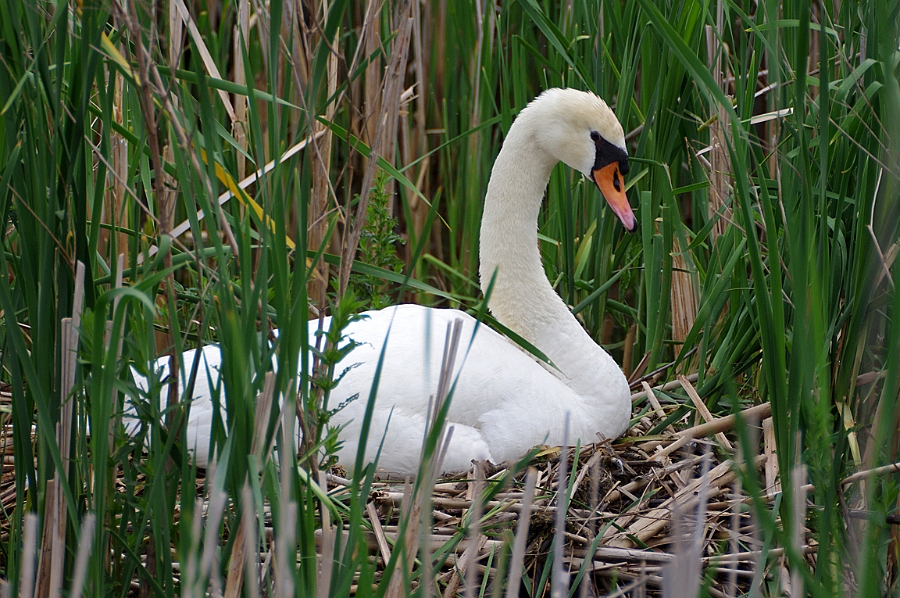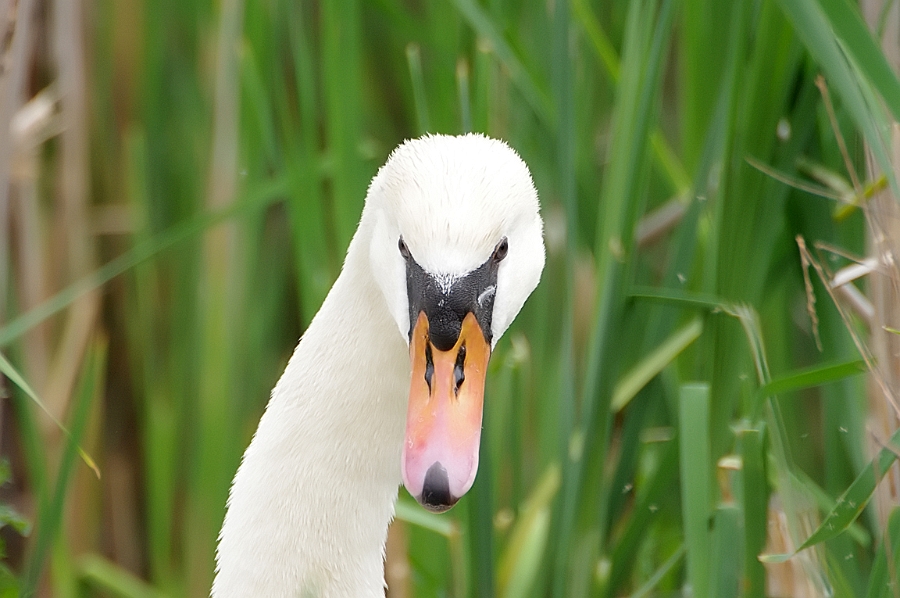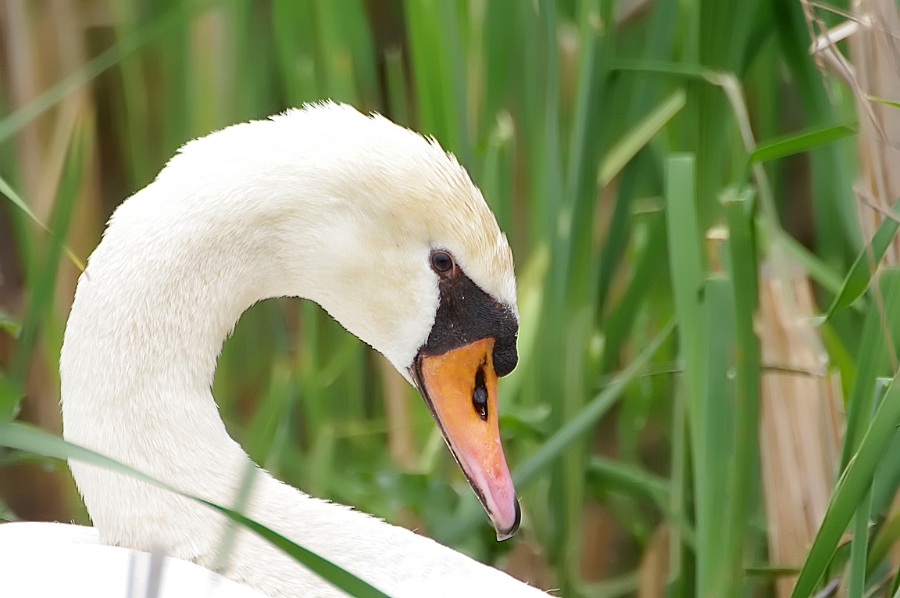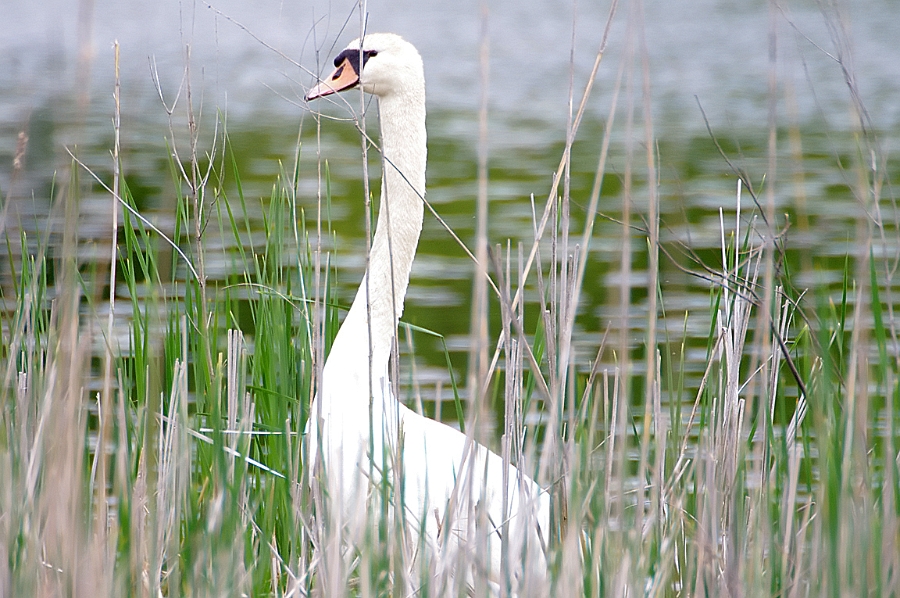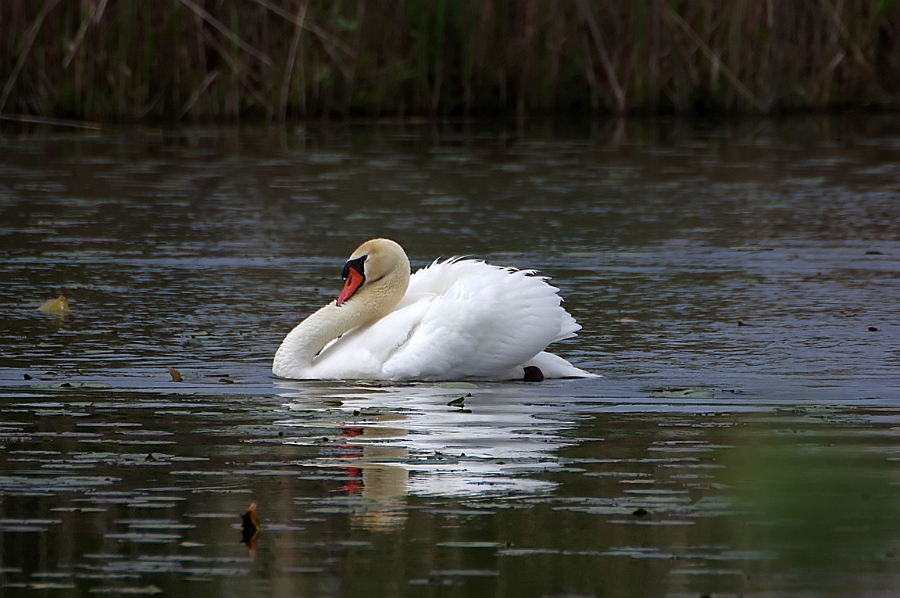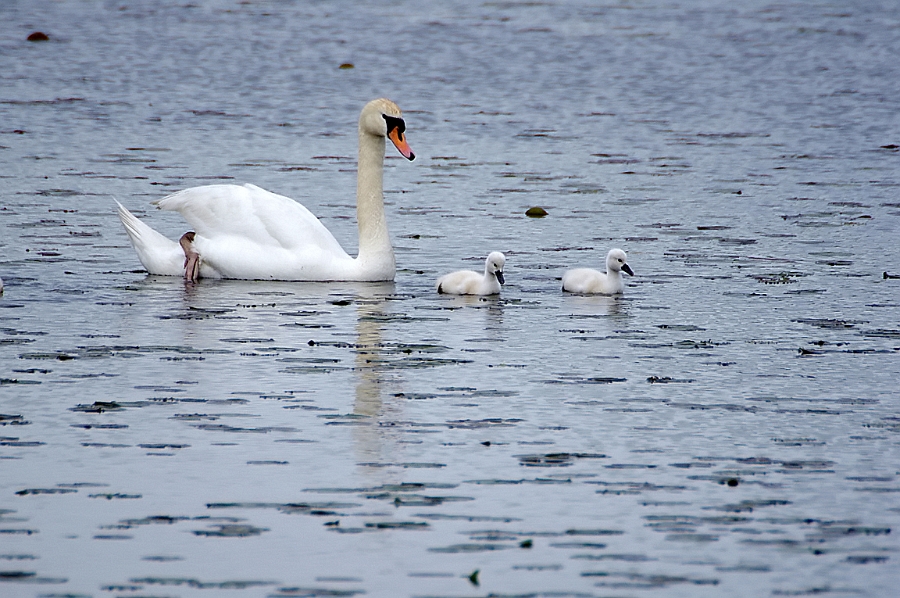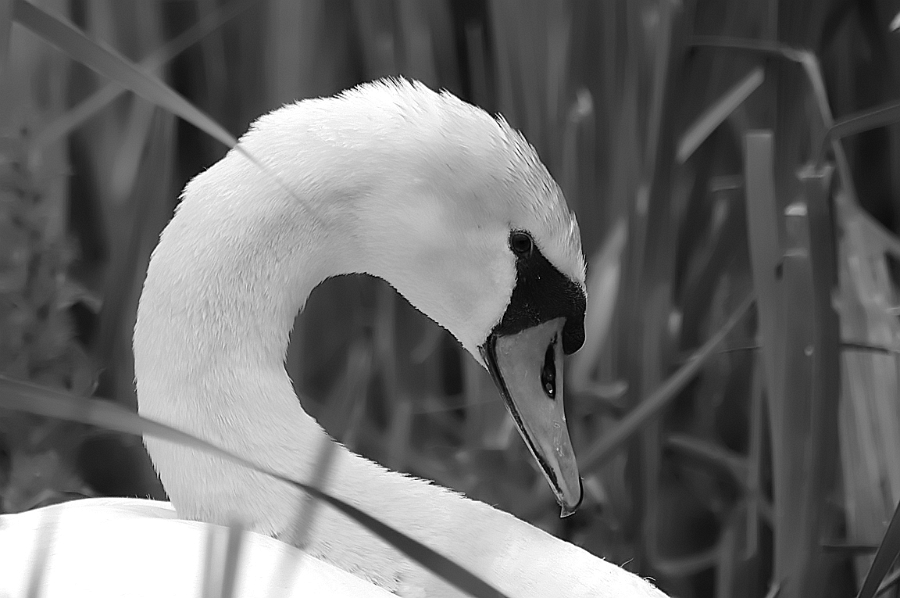|
|
|
 |
Mute Swan
|
| Cygnus olor | |
A native of northern and central Eurasia, the Mute Swan was introduced into North America to grace the ponds of parks and estates. Escaped individuals have established breeding populations in several areas, where their aggressive behavior threatens native waterfowl.
Interesting Information
-
Downy young Mute Swans (called cygnets) come in two color morphs: a gray form and a white form. The gray (or "Royal") chicks start off with gray down and grow in gray-brown and white feathers, giving them a mottled look. White (or "Polish") chicks have all white down and juvenal feathers. Adults of the white morph may have pink or gray legs and feet instead of black, but otherwise the adults look alike.
- The Mute Swan is reported to mate for life. However, changing of mates does occur infrequently, and swans will remate if their partner dies. If a male loses his mate and pairs with a young female, she joins him on his territory. If he mates with an older female, they go to hers. If a female loses her mate, she remates quickly and usually chooses a younger male.
- The black knob at the base of the male Mute Swan's bill swells during the breeding season and becomes noticeably larger than the female's. The rest of the year the difference between the sexes is not obvious.
Description
Adult Description
-
Large, all-white waterfowl.
-
Long, curved neck.
-
Orange bill and black face.
-
Length Range: 142-157 cm (56-62 in)
-
Weight: 11789 g (416 oz)
-
Size: Very Large (32 - 72 in)
-
Color Primary: White
-
Underparts: White
-
Upperparts: White
-
Back Pattern: Solid
-
Belly Pattern: Solid
- Breast Pattern: Solid
Sex Differences
Sexes similar.
Immature
Dirty gray or white. Legs gray or pinkish. Bill gray or tan, turning pinkish. Bill knob lacking or small. Lores white and feathered, turning black.
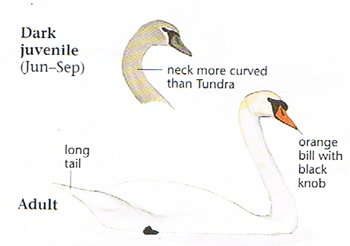
Photo taken from: The Sibley Field Guide by David Allen Sibley
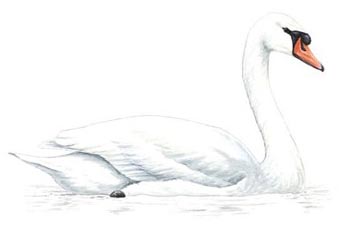
Photo taken from: The Royal Society for the Protection of Birds
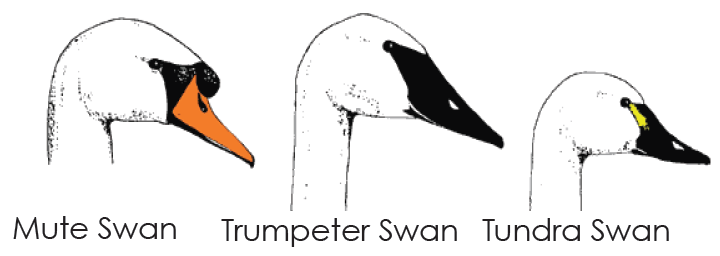
Photo taken from: Trumpeter Swan Society
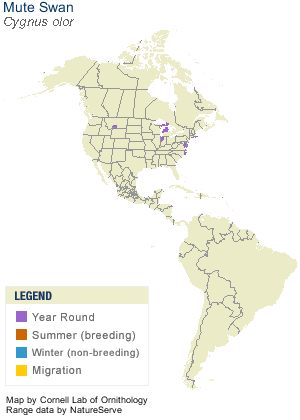
© 2003 Cornell Lab of Ornithology
|
Habitat |
|
Prefers shallow coastal ponds, estuaries, ponds, bogs, and streams flowing into lakes. |
|
Behavior |
|
Tips-up to reach submerged aquatic vegetation. |
|
Food |
|
Aquatic plants and some aquatic animals. |
Taxonomy
| Kingdom: | Animalia |
| Phylum: | Chordata |
| Subphylum: | Vertebrata |
| Class: | Aves |
| Order: | Anseriformes |
| Family: | Anatidae |
| Subfamily: | Anserinae |
| Genus: | Cygnus |
| Species: | Cygnus olor |
Similar Species |
|
|
Bird Sound |
|
Not mute. Calls quiet and do not carry. A snorting "heorrr." Hisses aggressively. Wings make singing noise in flight. |
|
Eggs look like this |
|
Photo taken from: ARCTOS Collaborative Collection Management Solution |
